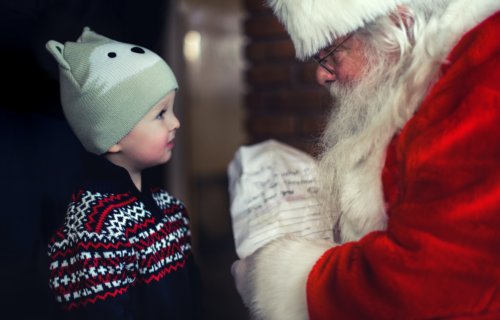World’s first “academic” study on Santa Claus shows that many children discovered the truth behind jolly ol’ Saint Nick from missteps by their parents.
EXETER, England — When did you first learn the truth about Christmas? A new, ongoing international study reveals that the average child discovered Santa Claus wasn’t real at age 8. In fact, about one in seven kids felt betrayed by their parents after finding out that the guy at the mall was really a fake.
Chris Boyle, a psychologist professor from the University of Exeter, is behind the first-ever international academic “Santa Survey.” He’s received responses from more than 1,200 people from across the globe thus far. Participants are asked to reveal details such as their earliest memories of Santa, how they found out he wasn’t real, and their feelings after discovering the truth.
“During the last two years I have been overwhelmed by people getting in touch to say they were affected by the lack of trust involved when they discovered Santa wasn’t real,” says Boyle in a news release. “It has been fascinating to hear why they started to believe he is fictional. The main cause is either the accidental or deliberate actions of parents, but some children started to piece together the truth themselves as they became older.”
The results show that moms and dads worldwide need to be more cognizant of their own actions if they want their kids to still have faith in Father Christmas. For example, one participant recalled being 10 years old when they stumbled upon their parents eating and drinking the sweets left out for Santa. Another respondent was awakened at age 11 by their “tipsy” father who was dropping presents en route to the tree.
Some sleuth-like children were just too smart for their own good. One respondent figured out the truth at age seven by spotting a present for her sister hidden in her parents’ room weeks before Christmas — only to have her folks claim it was from Santa Claus come Christmas morning. Another participant simply noticed that their father had the same handwriting as Santa.
Super-sleuth kids pick up on Santa’s shortcomings
Of course, some kids are just able to figure out that logistically it’s impossible for Santa Claus to deliver gifts to every child in the world so quickly.
“Learnt enough about math, physics, travel, the number of children on the planet ratio to the size of the sleigh to figure it out on my own,” wrote one American respondent, who put two-and-two together at age nine.
An 8-year-old from England lost all faith in the big guy when they couldn’t get a firm answer as to why Santa wouldn’t bring food to children in “poor countries.” One respondent admitted to realizing “it was impossible for such a fat man to fit down the chimney,” while others didn’t understand how he wouldn’t get hurt in the act, especially when a fire was burning.
Another common mistake: leaving price tags on gifts. After all, Santa doesn’t need to go shopping.
Teachers have been found to spoil the holiday, too. One person wrote about their teacher explaining to the class of 7-year-olds that no one lives in the North Pole, while another was assigned (also at age 7) to write about how they found out Santa wasn’t real. And one bright pupil noticed Santa looked a lot like a school employee at a Christmas party.
For many respondents, the revelation left them quite furious as youngsters. A third said they were upset after making the discovery, 15 percent felt betrayed by their parents, and 10 percent were flat out mad. Three in 10 respondents even said their trust in adults was affected by the stunning turn of events.
“As much as this research has a light-hearted element, the responses do show a sense of disappointment and also amusement about having been lied to,” says Boyle.
Some participants said they were forced to reveal the truth because the idea of Santa scared their children. One participant said her 5-year-old was disturbed by the idea of a strange man entering their house.
Even so, a third admit they wished they still believed Santa Claus was real today. Thankfully, Saint Nick’s spirit and meaning are entirely real, and perhaps that’s what matters most on Christmas Day.
This article was originally published December 15, 2018.
